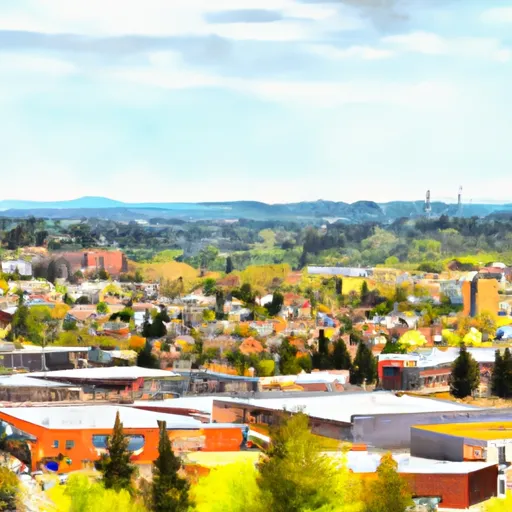-
 Snoflo Premium
Snoflo Premium
Get unlimited access to all our content
With no Ad interruptions! - Start Your Free Trial Login with existing account
Keller
Eden Index
Climate
8.5
•
Recreation
1.2
•
Community
0.8
•
Safeguard
4.0/10

Keller, Washington is a small rural community nestled in Ferry County. The region experiences a semi-arid climate, characterized by hot, dry summers and cold, snowy winters. Summers are generally sunny with temperatures ranging from the mid-80s to low 90s°F, while winters see temperatures dropping to the 20s and frequent snowfall.
Hydrologically, Keller is located near the eastern foothills of the Cascade Mountains, making it part of the Columbia River Basin. The area is rich in hydrology constituents, including several rivers and streams like the Sanpoil River and its tributaries. These water bodies support a diverse range of aquatic life and provide opportunities for fishing, boating, and wildlife observation.
Outdoor recreation enthusiasts will find plenty to explore in Keller. The surrounding natural landscape offers numerous opportunities for hiking, camping, and wildlife photography. The nearby Colville National Forest provides ample trails for off-roading, mountain biking, and horseback riding. Hunting is also popular in the area, with various game species available for pursuit.
In summary, Keller, Washington offers a semi-arid climate, abundant hydrology constituents, and a range of outdoor recreational activities, making it an enticing destination for nature lovers and outdoor enthusiasts.
What is the Eden Index?
The Snoflo Eden Index serves as a comprehensive rating system for regions, evaluating their desirability through a holistic assessment of climate health, outdoor recreation opportunities, and natural disaster risk, acknowledging the profound impact of these factors on livability and well-being.
Climate Health Indicator (CHI): 8.5
Keller receives approximately
299mm of rain per year,
with humidity levels near 64%
and air temperatures averaging around
10°C.
Keller has a plant hardyness factor of
6, meaning
plants and agriculture in this region thrive during a short period during spring and early summer. Most
plants will die off during the colder winter months.
By considering the ideal temperature range, reliable water supplies, clean air, and stable seasonal rain or snowpacks, the Climate Health Indicator (CHI) underscores the significance of a healthy climate as the foundation for quality living.
A healthy climate is paramount for ensuring a high quality of life and livability in a region, fostering both physical well-being and environmental harmony. This can be characterized by ideal temperatures, reliable access to water supplies, clean air, and consistent seasonal rain or snowpacks.
Weather Forecast
Streamflow Conditions
Upper Columbia
Area Rivers
Upper Columbia
Snowpack Depths
Upper Columbia
Reservoir Storage Capacity
Upper Columbia
Groundwater Levels
Recreational Opportunity Index (ROI): 1.2
The Recreational Opportunity Index (ROI) recognizes the value of outdoor recreational options, such as parks, hiking trails, camping sites, and fishing spots, while acknowledging that climate plays a pivotal role in ensuring the comfort and consistency of these experiences.
Access to outdoor recreational opportunities, encompassing activities such as parks, hiking, camping, and fishing, is crucial for overall well-being, and the climate plays a pivotal role in enabling and enhancing these experiences, ensuring that individuals can engage in nature-based activities comfortably and consistently.
Camping Areas
| Campground | Campsites | Reservations | Toilets | Showers | Elevation |
|---|---|---|---|---|---|
| Keller Ferry - Lake Roosevelt National Rec Area | 55 | 1,303 ft | |||
| Ferry Lake | 13 | 3,441 ft | |||
| Jones Bay - Lake Roosevelt National Rec Area | 9 | 1,344 ft | |||
| Ten Mile | 13 | 2,099 ft | |||
| Rainey Creek | 10 | 2,005 ft |
Nearby Ski Areas
Catastrophe Safeguard Index (CSI):
The Catastrophe Safeguard Index (CSI) recognizes that natural disaster risk, encompassing floods, fires, hurricanes, and tornadoes, can drastically affect safety and the overall appeal of an area.
The level of natural disaster risk in a region significantly affects safety and the overall livability, with climate change amplifying these risks by potentially increasing the frequency and intensity of events like floods, fires, hurricanes, and tornadoes, thereby posing substantial challenges to community resilience and well-being.
Community Resilience Indicator (CRI): 0.8
The Community Resilience Indicator (CRI) recognizes that education, healthcare, and socioeconomics are crucial to the well-being of a region. The CRI acknowledges the profound impact of these elements on residents' overall quality of life. By evaluating educational resources, healthcare accessibility, and economic inclusivity, the index captures the essential aspects that contribute to a thriving community, fostering resident satisfaction, equity, and social cohesion.

